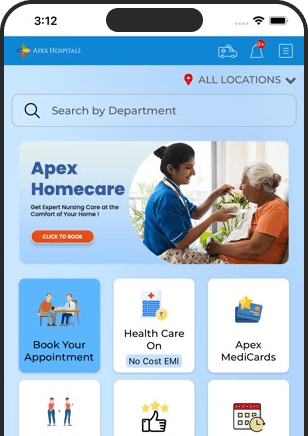
What is an echocardiogram?
An echocardiogram (echo) is created using ultrasound waves to create an image of the heart. It is a non-invasive medical technique that creates no radiation and has few adverse effects.
A doctor can see the following during an echocardiogram:
- The thickness and size of the heart chambers
- How well the heart's valves are functioning
- The direction through which the blood is flowing through the heart
- Whether there are any blood clots in the heart
- Cardiac muscle tissue that is injured or weak
- Issues with the pericardium, the fluid-filled sac that surrounds the heart
- Causes of stroke
Doctors frequently utilize echocardiography to assess a person's overall heart health, particularly after a heart attack or stroke.
Types of echocardiograms
- Transthoracic echocardiography.
This is the most often used type of echocardiography. A transducer will be put on your chest, above your heart. Ultrasound waves are sent through your chest toward your heart by the transducer. A computer interprets the sound waves that bounce back to the transducer. This generates the live images seen on a monitor. A health specialist will collect various types of photographs and information by requirements.
What to expect:
Transthoracic echocardiography is non-invasive and painless. There is no need to prepare for this test in advance, and no recovery time is required.
The following is most likely to occur in the testing centre:
- You must remove your clothes from the waist and wear a gown.
- If the doctor employs a contrast dye or saline solution, the solution will be injected or infused.
- You will be asked to lie on a table or stretcher on your back or side.
- The technician will apply gel to the chest to collect photos and slide a wand across it.
- They may ask you to shift positions or hold your breath for a short period at particular intervals.
- Transoesophageal echocardiography
Your doctor may recommend a transoesophageal echocardiography for more thorough imaging. The doctor guides a much smaller transducer down your neck through your mouth during this treatment. They will numb your throat to make the surgery more comfortable and to prevent the gag reflex.
The transducer tube is inserted into your oesophagus, which connects your throat to your stomach. With the transducer behind your heart, your doctor can see any issues and image some heart chambers that the transthoracic echocardiography does not show.
What to expect
Before the test, your doctor will likely instruct you to fast for 8 hours.
During the procedure, they:
- will inject a little sedative to help you relax before they begin
- will use an anaesthetic gel or spray to numb your neck
- will insert the tube gently into your mouth and guide it down your throat, taking care not to injure you
- The tube will be moved up, down, and sideways to obtain clear images.
- There should be no discomfort or trouble breathing during the process. The procedure usually takes between 20 and 40 minutes.
Following the procedure, you should expect the following:
- You may need to stay in the hospital for a few hours while the doctor monitors your blood pressure and other vital signs.
- For a few hours, your throat may be painful.
- You should not eat or drink anything for 30 to 60 minutes following the surgery and avoid hot liquids for a few hours.
- After 24 hours, you will be able to resume your normal activities.
- Stress echocardiography
Transthoracic echocardiography is used in a stress echocardiogram; however, the images are collected before and after you've exercised or taken medication to make your heart beat faster. This lets your doctor to assess how your heart responds to stress.
It can also detect indicators of heart failure, excessive blood pressure, and other issues.
What to expect
Patches that connect to the echocardiography machine will be applied to your chest by your doctor.
Then one of the following will be used to raise the stress on your heart slightly:
- Use a treadmill or a stationary bicycle to workout.
- Medicine such as Dobutamine
- Adjusting the pacemaker, in case you have it
The echocardiography and other devices will collect data at regular intervals to determine how the heart responds and how well it works.
They will take measurements of your:
- heart rate
- breathing
- high blood pressure
For an exercise stress test, follow these steps:
- Come to the test prepared to exercise.
- A doctor may inject a contrast dye before the test to help offer a clearer image.
- Before, during, and after the exercise, the doctor will take your heart rate and blood pressure.
Your doctor will notify you whether you need to make any changes, such as ceasing medication, before the appointment. The stress echo takes typically 20 to 30 minutes, although this can vary depending on how long you exercise or how long the medicine takes to boost your heart rate.
- Three-dimensional echocardiography
A three-dimensional (3-D) echocardiogram creates a 3-D image of your heart using transoesophageal or transthoracic echocardiography. This requires numerous photos from various perspectives. It is used to diagnose cardiac issues in children before heart valve surgery.
What to expect
A doctor may use a contrast agent in some instances to obtain a clearer image. This will be given to you as an injection during the scan.
Health In A Snap, Just One App.
KNOW MORE
